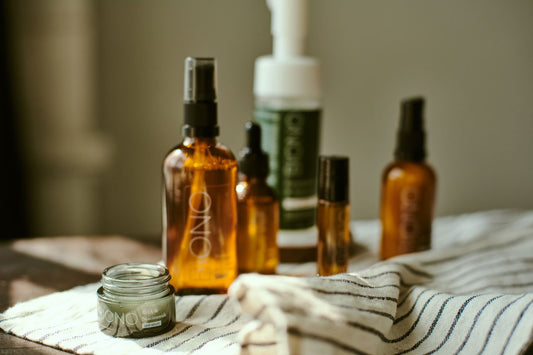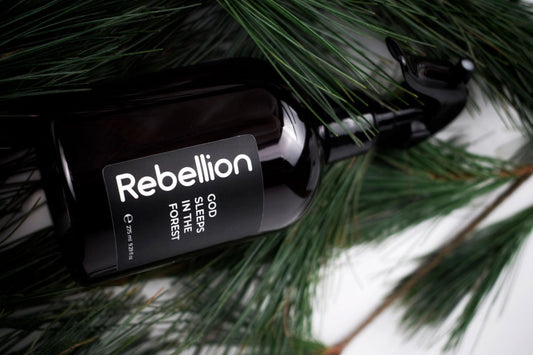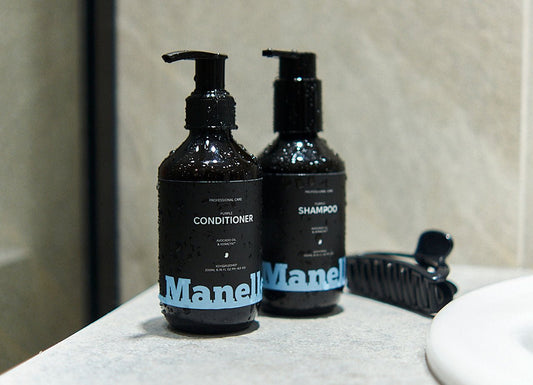
Peeling for the face: How to achieve perfect skin
Facial peeling is one of the most effective skin care procedures. It helps remove dead cells, even out skin texture, and improve its overall appearance. Modern peeling products allow you to achieve professional care results even at home. In this blog, we will look at what types of peeling exist, who they are suitable for, and how to choose the right product for your skin.
Facial peeling: skin renewal for a healthy look
Facial peeling is an effective way to deeply cleanse and renew the skin. It helps remove dead skin cells, improve blood circulation and stimulate natural regeneration processes. With regular use, the skin becomes smooth, radiant and more receptive to care products.
Modern facial peels are divided into several types: mechanical, chemical and enzymatic. Mechanical ones contain small abrasive particles that physically exfoliate the skin, chemical ones work with acids, and enzymatic ones work with natural enzymes. The choice of product depends on the type of skin and its needs: enzyme peels are suitable for sensitive skin, products with salicylic acid for oily skin, and mild acid formulas for dry skin.
For facial peeling to bring maximum benefits, it must be used correctly. Before the procedure, the skin should be cleansed, and after - moisturized and protected from the sun, especially if acids were used. The optimal frequency of peeling is 1-2 times a week, depending on the condition of the skin. Regular care will help maintain its freshness, even tone and healthy appearance.
What is peeling and why is it needed?
Peeling is a basic skin care procedure that helps maintain a healthy and well-groomed appearance. With age or under the influence of negative external factors, cell renewal slows down, the skin becomes rougher, dullness and unevenness appear. Peeling helps to gently remove the dead layer of cells, which improves the texture of the skin and gives it a fresh look.
This procedure is necessary not only for aesthetic appearance, but also to maintain skin health. It prevents clogged pores, stimulates natural regeneration processes, and improves the penetration of active ingredients from care products.

What happens during peeling?
The skin is constantly exposed to external factors such as ultraviolet radiation, dust, toxins, and temperature changes. This causes the accumulation of impurities and dead cells that do not have time to be removed on their own. This not only complicates the natural renewal processes, but also creates a barrier to the penetration of nutrients from cosmetics.
During peeling, the following occurs:
- Cleansing the top layer of the skin. Dead cells are removed, opening access to a fresh layer of the epidermis.
- Stimulates regeneration. By removing old cells, the body activates skin renewal. This is especially useful for combating fine wrinkles and scars.
- Smoothing texture. The skin becomes smooth, even to the touch, and its tone is more uniform.
- Improves blood circulation. The light massaging effect of peeling helps saturate the skin with oxygen, which gives it a natural glow.
The procedure also has a long-term effect, as it stimulates rejuvenation processes. Proper peeling helps not only to renew the skin, but also to maintain its elasticity and natural firmness.
Remember that peeling is not only about beauty, but also about maintaining skin health, especially if you take into account its needs and choose the right products.
Peeling allows:
- Renew the top layer of the skin. After the procedure, the skin becomes soft and smooth.
- Get rid of unevenness. The skin texture is smoothed out and the tone looks more uniform.
- Improve the penetration of cosmetics. Without a layer of dead cells, care products penetrate deeper layers of the skin and work more effectively.
- Activate regeneration. Peeling stimulates the cell renewal process, making the skin look fresh and healthy.
Exfoliation is an integral part of skin care, as it ensures its freshness, smoothness and healthy appearance. Thanks to regular peeling, the skin not only becomes more well-groomed, but also responds better to the use of other cosmetic products. Make peeling a part of your beauty routine so that your skin always looks young and radiant!
Types of facial peels
There are several main types of peels that are suitable for different skin types and specific problems. Each of them has its own characteristics, advantages and recommendations for use. Let's consider the most popular types in more detail.
1. Mechanical peeling
Mechanical peeling is a physical cleansing of the skin using abrasive particles that exfoliate dead cells. Such particles can be of natural origin (for example, crushed apricot kernels or sea salt) or synthetic (small polymer granules). Means for mechanical peeling are available in the form of scrubs, creams with particles or special sponges.
Advantages of mechanical peeling:
- Effectively cleanses the skin of impurities.
- Removes blackheads and tightens pores.
- Suitable for quickly evening out skin texture.
Who is suitable for:
Mechanical peeling is best suited for normal, combination, or oily skin. It works well with roughness and excess sebum.
Limitation:
For sensitive or damaged skin, mechanical peeling may be too aggressive, as the strong impact of the particles can cause irritation or microtrauma.
Tip: Use mechanical peeling no more than 1-2 times a week to avoid excessive stress on the skin.
2. Chemical peel
Chemical peeling works thanks to active substances that dissolve the bonds between keratinized cells, allowing them to easily peel off. The main components of chemical peeling are acids:
- AHA acids (alpha hydroxy acids): lactic, glycolic, mandelic. They work on the surface of the skin, even out tone and texture.
- BHA acids (beta hydroxy acids): salicylic acid, which penetrates deep into pores, cleansing them.
- PHA acids (polyhydroxy acids): mild acids that are suitable for sensitive skin.
Benefits of chemical peeling:
- Evenly exfoliates the skin without damaging it.
- Reduces pigmentation, post-acne and unevenness.
- Helps deep cleanse pores and reduce inflammation.
Who is suitable for:
Chemical peels are suitable for most skin types, including sensitive skin. They are an ideal choice for those looking to get rid of acne, even out skin tone, or reduce the signs of aging.
Limitation:
After the procedure, the skin becomes more sensitive to sunlight, so be sure to use SPF protection. In addition, if the acid concentration is incorrectly selected, irritation may occur.
Tip: Chemical peeling is best done in the evening so that the skin has time to recover.
3. Enzyme peeling
Enzyme peels are based on enzymes that gently break down the protein bonds between dead cells. The most common enzymes in such products are papain (from papaya) and bromelain (from pineapple).
Benefits of enzyme peeling:
- Gently cleanses the skin without damaging it.
- Suitable even for sensitive or dry skin.
- Does not cause a feeling of tightness or discomfort.
Who is suitable for:
Enzyme peeling is an optimal choice for people with thin, sensitive or dry skin. It is also good for regular use as a gentle cleansing method.
Limitation:
Enzyme peels have a less pronounced effect compared to mechanical or chemical peels. If the skin is very oily or has pronounced imperfections, an enzyme peel may not be powerful enough.
Tip: Use an enzyme peel as part of your daily skincare routine to keep your skin looking fresh.

How to choose a peeling for your skin?
Choosing a peel is a key step in facial care, as the right product helps reveal the skin's natural beauty, solve specific problems, and avoid unwanted effects. To find the perfect option, it's important to consider your skin type, current condition, and desired result.
Peeling for sensitive facial skin
Sensitive skin requires special attention, as it is prone to irritation and redness. For this type of skin, delicate peels that act gently and do not injure the epidermis are ideal. Enzyme products that contain papaya or pineapple enzymes provide gentle cleansing without damaging the skin's barrier function. If you prefer a chemical peel, you should choose products with polyhydroxy acids (PHA), which work gently with the surface layer of the skin and reduce the risk of irritation.
Peeling for oily facial skin
Oily skin often suffers from clogged pores, blackheads, and excess shine. Chemical peels with salicylic acid are great for this skin type. They penetrate deeper into the skin, dissolving impurities and reducing inflammation. Mechanical peels can also be effective for oily skin, but they should be used with caution to avoid irritating the skin. The main task is to regulate sebum production and cleanse pores, which provides a matte and well-groomed appearance.
Peeling for dry facial skin
Dry skin needs an exfoliant that both cleanses and provides extra hydration. Enzyme products are a great choice because they gently remove dead skin cells without causing dryness. Chemical peels with alpha hydroxy acids, such as lactic or mandelic acid, also help to retain moisture in the skin, smoothing its texture and giving it a glow. It is important that the product contains soothing ingredients that further soften the skin and relieve possible irritation.
Combination skin and peeling for it
Combination skin often requires a personalized approach, as different areas of the face have different needs. The T-zone, which is usually oily, may require a deeper cleanse, while dry areas, such as the cheeks, require gentle care. In this case, you can combine several types of peels: chemical peels for oily areas and enzymatic peels for drier areas. This allows you to effectively address all the skin's needs, providing balanced care.
Facial peeling. Normal skin.
Normal skin is the most unpretentious to peeling. Both mechanical and chemical means are suitable for it. The main task is to maintain its natural beauty, as well as prevent the appearance of black spots or small irregularities. Regular use of peeling will help maintain smoothness and radiance of the skin, preventing the accumulation of dead cells.
When choosing a peel, it is important to consider not only your skin type, but also the current season. In the summer, you should prefer milder products to avoid photosensitivity, while in the cold season, you can use more intensive formulas that will help combat dryness and peeling. Always supplement your care with the use of sunscreen after the procedure, regardless of the season, as the skin after peeling becomes more sensitive to ultraviolet rays.
A properly selected peel will become an integral part of your routine, allowing you to enjoy smooth, well-groomed and radiant skin.
Basic rules for using facial peeling
Exfoliation is an important step in skin care that helps cleanse, renew, and improve the appearance of your skin. However, improper use of exfoliation can do more harm than good to your skin. To avoid irritation and get the maximum effect, follow a few simple rules.
Frequency of peeling use
The frequency of the procedure depends on your skin type and the features of the product. For oily skin, peeling is recommended to be done twice a week, especially if there is a need for deep cleansing of pores or combating blackheads. For dry, sensitive or thin skin, the optimal frequency will be once a week, and it is better to use mild formulas that do not injure the epidermis. For normal skin, one or two times a week will be enough to maintain its freshness and even texture.
Do not exceed the recommended frequency, even if your skin appears rougher or duller, as overuse of exfoliants can weaken your skin's natural barrier, making it more susceptible to irritation and external factors. Always follow the product's instructions, as different products may have different recommendations.
Moisturizing after the procedure
After peeling, the skin becomes more receptive to care products, so moisturizing is a mandatory step for its recovery. Removing the dead skin layer opens up access to the deeper layers of the epidermis, and a moisturizer or mask will help the skin retain moisture, providing comfort and softness.
It is recommended to use products containing hyaluronic acid, ceramides, panthenol or vegetable oils, which contribute to deep hydration and regeneration. If after the procedure there is a feeling of tightness, a moisturizing mask with soothing ingredients such as aloe vera or chamomile will be a great solution. Remember that moisturizing not only helps to avoid discomfort, but also enhances the peeling effect, making the skin more radiant.
Sun protection
After any type of peel, especially chemical or enzymatic, the skin becomes more sensitive to ultraviolet radiation. This is because the removal of the top layer of cells reduces the skin's natural protection from the sun. Lack of proper protection can lead to pigmentation, redness, or even skin damage.
To avoid this, apply a sunscreen with SPF 30 or higher every morning after your peel, regardless of the season. Choose light textures that don’t weigh down your skin but provide a high level of protection. Avoid direct sunlight for the first few days after your procedure and wear a hat for extra protection if possible.
Avoid aggressive use of peeling
Exfoliation is a powerful tool for skin renewal, but using it incorrectly can cause more harm than good. Never use exfoliation on damaged, irritated, or inflamed skin. This can make things worse and cause additional problems, such as infections or irritation.
If you have active breakouts, you should avoid mechanical exfoliation, as the abrasive particles can spread bacteria all over your face. In such cases, it is better to use gentle enzyme or chemical peels that work without friction. Also, avoid excessive pressure during the procedure, especially if you are using a scrub. Light, massaging movements are all that is needed to achieve the desired effect.
Following the rules is the key to healthy skin
Following these rules will help avoid unwanted effects and ensure your skin is healthy and beautiful. Peeling should be not only effective, but also safe, so it is important to take into account the characteristics of your skin and choose the right products. Regular care combined with moisturizing and sun protection will guarantee smooth, radiant and well-groomed skin.
Benefits of regular facial peeling
Peeling is one of the most effective skin care procedures, providing a comprehensive result, combining cleansing, rejuvenation and improving the appearance. Regular use of peeling helps to solve a number of problems that arise due to external factors, stress or age-related changes.
Evens out skin texture and tone
One of the main benefits of peeling is its ability to smooth the skin's surface. During the procedure, the dead layer of cells is removed, making the skin smoother and softer to the touch. Regular skin renewal helps eliminate unevenness, small scars and other imperfections.
In addition, peeling helps to even out skin tone, making it uniform and radiant. This is especially useful for those who face the problem of redness or uneven pigmentation. By removing dead cells, the complexion becomes fresh and healthy.
Fights pigmentation and wrinkles
Pigmentation caused by sun exposure, age-related changes or acne is a common problem. Peeling helps reduce its appearance thanks to active ingredients that work in the deeper layers of the skin. For example, alpha-hydroxy acids (AHAs) stimulate cell renewal and gradually lighten dark spots.
In addition, regular use of peeling helps smooth out fine wrinkles. By stimulating collagen production, peeling improves skin elasticity, making it more elastic. This helps maintain a youthful appearance of the face even in adulthood.
Reducing the visibility of pores and blackheads
Enlarged pores and blackheads are a problem that affects the appearance of the skin and often causes discomfort. Peeling allows you to deeply cleanse the pores of dirt, sebum and makeup residues, which prevents them from clogging. Thanks to this, the pores become less noticeable and the blackheads are less pronounced.
Regular exfoliation also controls sebum production, which is important for oily skin. As a result, the skin looks matte and well-groomed.
Improving the penetration of active ingredients in care products
Removing the layer of dead skin cells allows skincare products to penetrate deeper into the skin. This significantly increases the effectiveness of serums, creams and masks. Active ingredients are better absorbed by skin cells, providing hydration, nourishment and repair.
If you exfoliate regularly, your facial care becomes more effective, and the effects of your cosmetics become noticeable after just a few applications. This allows you to achieve maximum results in your skincare routine.
Regular exfoliation is an important step in skin care that helps maintain healthy, fresh, and youthful skin. It helps fight pigmentation, wrinkles, enlarged pores, and other imperfections, leaving your skin smooth, radiant, and well-groomed. Make exfoliation a part of your beauty routine to enjoy perfect skin every day.
Conclusion: the secret to well-groomed skin
Facial peeling is an indispensable step in skin care, ensuring its freshness, smoothness and healthy appearance. This procedure helps not only to remove dead skin cells, but also stimulates the natural renewal of the skin, improves texture and promotes deep absorption of active ingredients of cosmetic products.
When choosing a peel, it is important to consider your skin type and characteristics. Following basic rules, such as the correct frequency, moisturizing, and sun protection, will help avoid irritation and ensure maximum effect. Regular peeling is not only about aesthetics, but also about skin health, as it helps prevent many problems, including clogged pores, uneven tone, and pigmentation.
Make exfoliation a part of your beauty routine and your skin will thank you with a radiant, well-groomed appearance. Taking care of yourself is an investment in your confidence and beauty!










